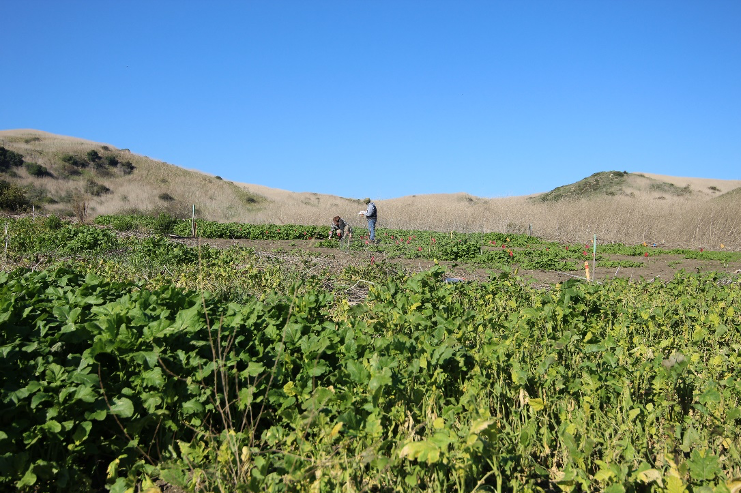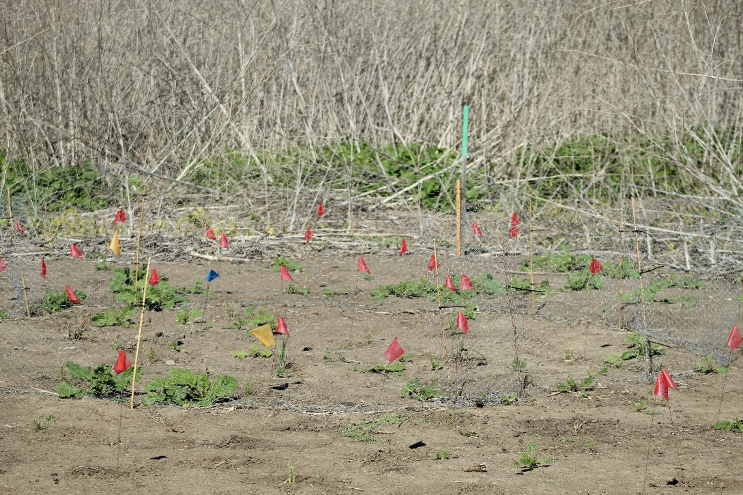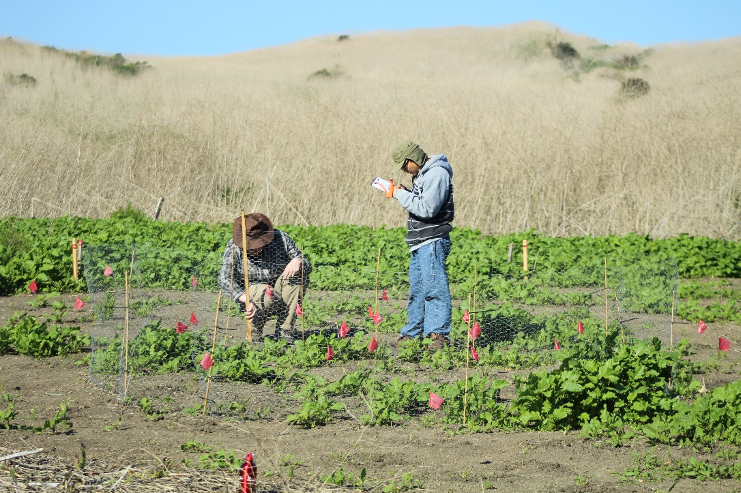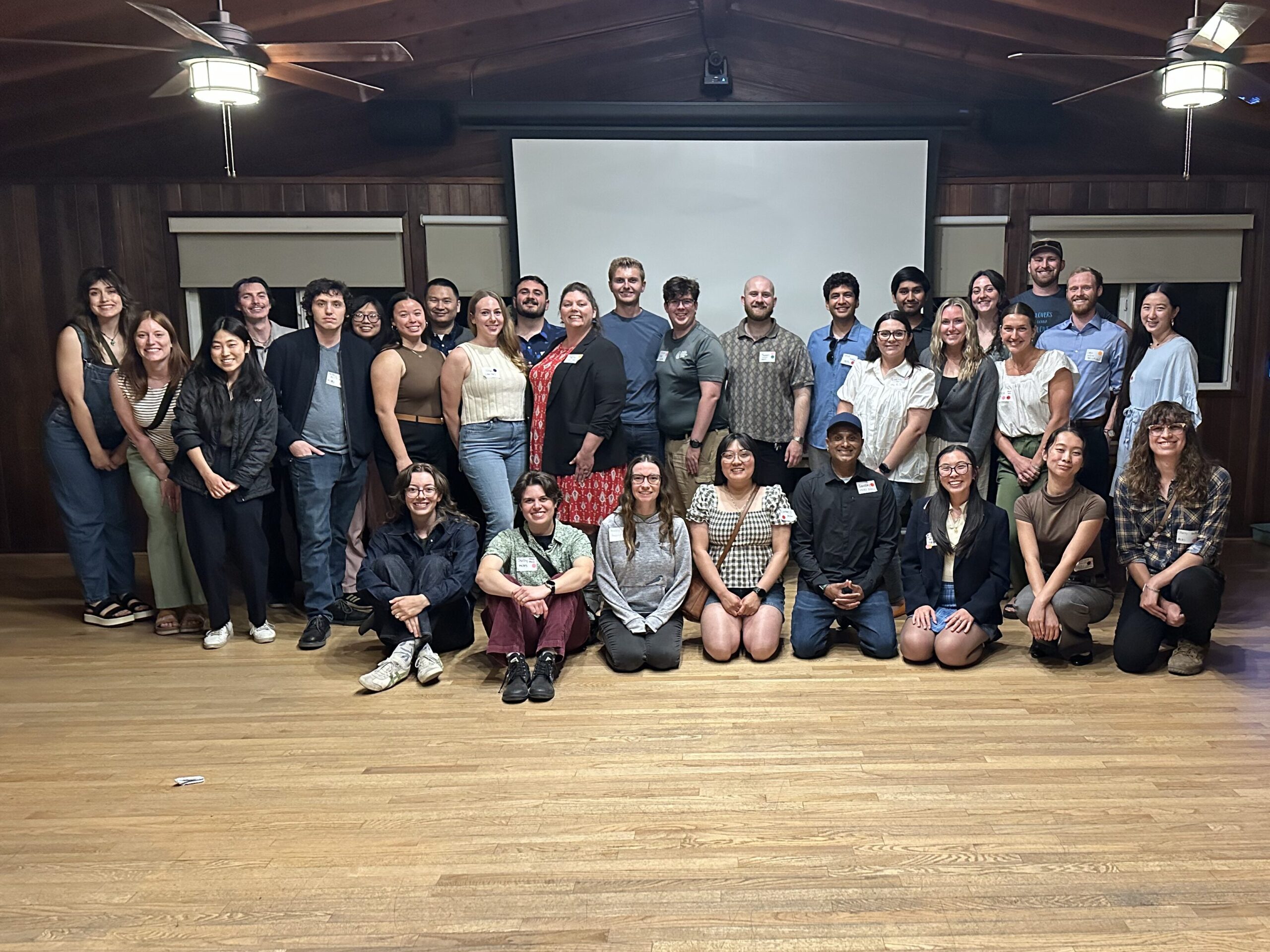Student Blog: Justin Morgan
Justin Morgan is a 2nd year MCRS student, whose work in environmental consulting, outdoor education, and land management, both in the corporate and non-profit sectors, has given him a great deal of experience with the flora here in his native Orange County, as well as a unique perspective towards ecological problems. His areas of emphasis include: reconnecting fragmented ecosystems, restoring plant diversity, and developing land management strategies for the conservation and promotion of special status plants.

A Grassland, Some Scientists, and Some Very Hungry Herbivores
This is the story of a grassland area, some scientists, and some very hungry herbivores. It is also a true story, which means there really isn’t an ending—in the real world, things don’t stop happening just because someone stopped writing about them. This particular story may never have a true ending because the story being told has been unfolding for decades.
The central character of this story is an area of grassland in Crystal Cove State Park called “The Bowl.” This grassland existed, like most ecosystems, in a perfectly functional state until people came along. Grazing tore up and compacted the soil, invasive species were introduced, and native plant species were forced out. Ecosystem processes altered, and floral and faunal communities were displaced. Finally, it was decided that this degraded grassland and a bunch of other lands nearby should all be protected, and Crystal Cove State Park was born. The grazing stopped, and the grassland area was finally given a chance to heal.

This area was named “The Bowl” because the topography of the land is bowl-shaped. Sadly, the area was so degraded that it entered what ecologists call an alternative stable state, which is when an ecosystem is degraded to the point that even when it stops being actively damaged, it stays the way it is rather than beginning the process of “healing” and returning to its natural state (Beisner et al. 2003). One day, State Park environmental scientists decided to actively work on restoring “The Bowl” to a functioning grassland. Work was done over several years. But no matter what they tried—ecosystem restoration is notoriously difficult—the area did not return to its former state.
The State Park environmental scientists asked ecological researchers from UC Irvine to collaborate on this project. Maybe together they could restore the area and learn something new about restoration in the process. They removed the invasive mustard, sowed native seeds and planted native plants, but the seeds never seemed to sprout, and the plants they planted disappeared. Instead of a barely functional mustard field, they now had a bunch of patches of bare dirt, which wasn’t functioning at all. Something was working against them, corrupting their efforts. But what? One person had an idea: what if the seeds were sprouting, but not living long enough for anyone to notice? What if the plants weren’t disappearing, but being eaten? The team wondered if the problem was nothing less than countless hungry bunnies.

The team tried once again to heal the broken grassland. But this time, the team decided to test the hypothesis that rabbits were eating the grasses, so they designed a study that involved installing fences around seven separate areas to keep the rabbits from eating the young grasses. Weeds were killed, seed mixes were prepared and sown, plants were planted, and fences were built. Now, the team is waiting to see if the grasses survive and spread. The grassland is waiting too, much as it has since time immemorial. Ecosystems are generally good at waiting. The rabbits are still coming, drawn by hunger to the fresh young grasses, but they can’t reach the tiny plants beyond the fences. Only one fence was breached within weeks, but for some reason, very little munching took place (Morgan et al. 2020). Will the fences hold? Will the grassland begin to heal? Ask me again when I’ve collected the next round of data.
References
Barr, S., J. L. Jonas, and M. W. Paschke. 2017. Optimizing seed mixture diversity and seeding rates for grassland restoration. Restoration Ecology 25: 396-404.
Beisner, B., Haydon, D. and Cuddington, K. (2003), Alternative stable states in ecology. Frontiers in Ecology and the Environment, 1: 376-382. doi:10.1890/1540-9295(2003)001[0376:ASSIE]2.0.CO;2
Cione, N. K., P. E. Padgett, and E. B. Allen. 2002. Restoration of a native shrubland impacted by exotic grasses, frequent fire, and nitrogen deposition in southern California. Restoration Ecology 10: 376-384.
Cox, R. D., and E. B. Allen. 2011. The roles of exotic grasses and forbs when restoring native species to highly invaded southern California annual grassland. Plant Ecology 212: 1699–1707.
Lulow, M. E., 2008. Restoration of California native grasses and clovers: the roles of clipping, broadleaf herbicide, and native grass density. Restoration Ecology 16: 584-593.
Morgan, J., Ayala, V., Lam, P., Ibrahim, M., 2020. Initial Data from Herbivore Exclusion Experiment at “The Bowl.” Unpublished Data.
Orrock, J. L., M. S. Witter, and O. J. Reichman. 2008. Apparent competition with an exotic plant reduces native plant establishment. Ecology 89: 1168-1174.



